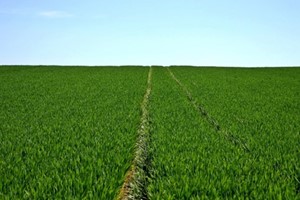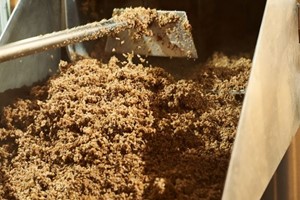HOW SORTING TECHNOLOGIES MAKE CONFECTIONERY PRODUCTION SAFER AND MORE EFFICIENT
Brand reputation is so important, yet in the confectionery business all it takes is one momentary slip in standards for this to be damaged and devalued. If just one batch of defective products should reach the end of the production line - or worse still, a foreign material potentially harmful to health - the commercial repercussions can be catastrophic. Which means that installing optical sorting machines on confectionery lines is crucial not only for product quality, but also to assure food safety.
Today’s sorting technologies achieve an accuracy that manual sorting simply cannot. The optical sorting machines offered by industry-leader TOMRA Food can be relied upon to detect and eject foreign materials, cross-contamination, product clumping, and malformed products. And at the same time as looking over the production line like guardian angels, automated sorters also enhance product hygiene, solve labor-related challenges, increase throughput, maximize yield, and gather data that can unlock further improvements in line efficiency.
All of this matters more now than ever before because consumers’ demands are changing. More people around the world are earning middle-class incomes and acquiring middle-class tastes. More are raising their expectations of food product quality. And fewer are prepared to tolerate product imperfections without complaining about them on social media platforms, where comments and photos can quickly reach and influence large audiences.
Today’s confectionery market is also being changed by the need for sustainability. More people are now aware that it is crucial to reduce energy use and greenhouse gas emissions and take better care of our planet’s limited resources. Retailers and consumers want to see food manufacturers addressing these concerns by implementing sustainable business practices and taking active measures to minimize food waste.
For all of these reasons - and because confectionery ingredients can be costly - sorters must remove unwanted materials and imperfect products without also throwing away good product. That’s why TOMRA’s sorters are designed, developed, and fine-tuned on-site to eject unwanted materials with minimal product loss. To minimize food waste and maximize yield, TOMRA’s machines achieve an exceptionally low good-in-bad reject ratio - and any good product ejected from the line can be recuperated when rejected materials are double-checked by running them through a sorter for a second time.
Impressive sorting capabilities
TOMRA’s sorting technologies can inspect materials flowing down a confectionery production line according to their color, shape, and product characteristics. Four sorters are particularly well-suited to confectionery applications: the Genius and its successor, the TOMRA 5B, both belt machines, and the Blizzard and Nimbus free-fall machines. Belt machines are generally most suitable for distinguishing the shapes of objects on the line and for hard candies that might be too fragile to land from a free-fall. Free-fall machines, which scan and separate objects in flight, are better suited to looking for discolorations. Both types of machines can be located on the line before or after the product is oiled, depending on the factory layout. Even though oiling can make the product sticky and sorting trickier, TOMRA’s machines nevertheless perform with unrivaled effectiveness.
The machine best suited to smaller confectionery production facilities, because of its entry-level price and small footprint, is the Blizzard. This free-fall sorter does its detection work with pulsed LEDs and a combination of cameras, with a lighting system that needs very little calibration or maintenance. The LED’s different wavelengths detect foreign material, misshapen product, and discolored product.
The Genius belt sorter also employs high-resolution cameras but combines these with advanced laser technologies. The Genius’ successor, the TOMRA 5B, employs on-belt 360-degree-surround cameras, a laser, and off-belt cameras. Capable of distinguishing the color, structure, and shape of objects on the line, these belt machines detect cross-contamination, starch, and foreign materials, as well as identifying clumping and misshapen products. These machines are particularly well-suited to the North American market, where confectionery factories tend to focus on a single product and require foreign object detection to be supplemented by challenging shape analysis.
The Nimbus free-fall machine stands out for its capability to sort different products - such as sugar-free, with-sugar, and multivitamin sweets - with a variety of programs and applications on the same platform. This machine inspects product with specific laser technologies and combinations, and sorts according to color, surface structure, and outline, with the ability to detect starch, foreign materials, and cross contamination. The Nimbus is in demand in European markets, where factories produce a variety of confectioneries and need to guarantee their customers a product free of cross-contamination.
The power to enhance business decisions
All of TOMRA’s sorting platforms are connectable to TOMRA Insight, a web-based data platform that gathers sorting data in near real-time and stores this securely in the cloud. Live data can be reacted to immediately (and remotely) to optimize machine settings; historical data can be processed into actionable information to unlock improvements in machine performance.
The extent of these improvements varies according to the type of food product being processed, but the potential is huge. Downtime can be reduced by monitoring machine health, supporting the management of predictive and condition-based maintenance, and preventing unscheduled machine shutdowns. Throughput can be maximized by evaluating throughput variations to optimize sorting equipment. Operating costs can be reduced by identifying gaps in production and analyzing root causes. And sorting to target quality can be enhanced by having accurate material-composition data. Such data analysis will become increasingly valuable as we move into a digitized future, with the power to transform sorting from an operational process into a strategic management tool.
Solving labor-related challenges
In addition to taking care of food safety and product quality, sorting machines also help solve the challenges traditionally associated with employing manual sorters - an effective pill for headaches caused by labor scarcity, cost, variable effectiveness, and absenteeism. And whereas manual sorting is unavoidably subjective, imperfect, and more vulnerable to error when laborers are tired or bored, automated sorters can work for hour after hour with superior accuracy, consistent standards, and unflagging efficiency.
What’s more, the COVID-19 pandemic has heightened awareness of how greater automation reduces the health risks inherent when people have to work closely together. The more production steps the automated system takes care of, and the less manual intervention there is, the smaller the contamination risk. Extensive and reliable process automation ensures that the end-product is hygienic.
The pandemic’s logistical complications - travel limitations and social distancing - have also highlighted the value of TOMRA’s ability to complement on-the-ground support with remote assistance. With the recently launched smartphone app TOMRA Visual Assist, TOMRA field service engineers and customers can work closely together even when they are thousands of miles apart. The engineer can provide detailed advice just as if standing right in front of the customer’s machine, and both the engineer and the customer can share documents or annotate images to clarify and explain directions.
Another initiative proving helpful during these unusual times is TOMRA’s Online Demonstration Room. This makes it possible for confectionery producers to test-run TOMRA’s sorting machines, using their own infeed materials, even when they are unable to visit a TOMRA Test and Demonstration Center in person. Tests are shown via a live video link, with the customer encouraged to ask questions, make requests, and direct one of the cameras showing the proceedings. After the test’s conclusion, observers are provided with a report which quantifies results precisely and in detail. This means that, despite travel restrictions, confectionery businesses can be certain of a machine’s capabilities before deciding whether to invest in the technology. An investment that pays back in many ways, not least in protecting that most valuable business asset, brand reputation.
https://www.tomra.com/














